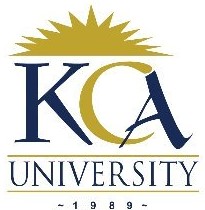 UNIVERSITY EXAMINATIONS: 2013/2014
UNIVERSITY EXAMINATIONS: 2013/2014
ORDINARY EXAMINATION FOR THE BACHELOR OF SCIENCE
IN INFORMATION TECHNOLOGY/ BUSINESS INFORMATION
TECHNOLOGY
BIT 2305 BBIT 204 ICT PROJECT MANAGEMENT
DATE: AUGUST, 2014 TIME: 2 HOURS
INSTRUCTIONS: Answer Question ONE and any other TWO
QUESTION ONE (Compulsory)
a) Define the term project management. (2 Marks)
b) Why do we carry out monitoring and control on a project? (3 Marks)
c) Name FOUR criteria by which a project can be judged a success. (2 Marks)
d) What are the three project activities that are needed for WBS? (3 Marks)
e) Describe THREE different algorithmic techniques for estimating effort for an IT
system development project. (6Marks)
f) With the aid of a diagram differentiate product view and project view (6 Marks)
g) Explain what the difference is between project risks and business risks (2Marks)
h) Explain what in project management is meant by ‘quality’ (2 Marks)
i) State and explain four inter-task dependencies. (4 Marks)
QUESTION TWO
You have been asked to assemble a project team for a development project. You will
require analysts, programmers and testers. There is an IT Department at the company
doing maintenance and support. You have been told that you will be able to get about
half the team you require from here and the other half will be hired from outside.
a) Describe FIVE key steps in the recruitment process from a staffing vacancy being
identified to putting a new effective team member in place. (10 Marks)
b) List FIVE factors you would take into account when deciding who should do which
task in a plan. (5 Marks)
c) The team members from the IT Department have been working on their tasks for a
month when the newly hired external analysts and programmers join. There is then a
decrease in the productivity of the existing staff. What could explain this? (5 Marks)
QUESTION THREE
a) In preparation for your meeting with your Sponsor, you have developed an estimate
using the PERT method. Briefly describe this method. (4 Marks)
b) A well-known major professional institution has decided to replace its existing, inhouse membership database with a package-based system. It has drawn up a short-list
of 4 off-the-shelf packages, but none meet its outline requirements completely. An
outline plan for the remaining tasks in this project has been drawn up as follows:
Tasks B, C, D and E are all dependent on task A.
Task A has no dependency
Task F cannot start until tasks B and C are both completed.
Task G cannot start until tasks B and D are both completed.
Task H is dependent solely on task E.
Task I cannot start until tasks F, G and H are all completed.
Task J is dependent solely on task I.
i) Draw a network diagram for this project, showing all dependencies and the earliest
start time, latest finish time, duration and float for each task. Highlight the critical path
and calculate its duration. (12 Marks)
ii) At the end of task A it is realised that task B can be reduced from 10 to 6 weeks but
task F should be extended from 3 to 5 weeks. Draw a gantt chart to reflect this
change. (4 Marks)
QUESTION FOUR
a) Using relevant examples mention and describe the data values used in Earned Value
Management Systems. (9 Marks)
b) Discuss six resources needed in software development projects (6 Marks)
c) Identify atleast five techniques for undertaking a cost benefit analysis used when
performing economic feasibility. (5 Marks)
QUESTION FIVE
a) Explain how a project manager might use information generated as part of project
control reporting to identify situations that are behind schedule for each of the
following reasons:
staff who are intended to be working full-time on the project are taken off
sometimes to help resolve emergency situations on other projects;
the original estimates of development times were too low
the project scope has been extended to meet additional requests from users
staff productivity is lower than expected. (8 Marks)
b) Identify at least FOUR different options that are available for bringing such a project
back on schedule when it has been found to be running late. (8 Marks)
c) Explain briefly the cost implications of each of the options that you have identified in
part b). (4 Marks)
